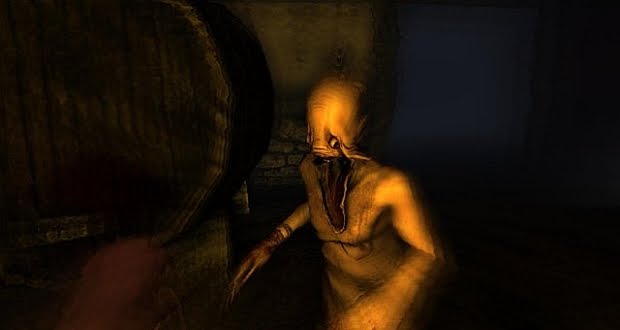Birth of a Monster Part 1: Creating Unspeakable Guidelines
Birth of a Monster Part 2: Conceptualizing the Horror
Birth of a Monster Part 3: Molding the Abomination
Birth of a Monster part 4: It’s alive!
(The following was supposed to be an article in a Russian magazine, but was never published. So because of that, I decided to post it on the blog instead. It was written in June 2010 by myself, Jonas Steinick Berlin and Olof Strand. Jonas and Olof were working as contractors for Frictional Games at the time. )

by Thomas Grip (Frictional Games)
The following article outlines the process of creating a creature model from scratch for our first person horror game Amnesia: The Dark Descent. It will go through the basic thinking that went into the design of the enemy, how the concept images where made, how the mesh was built and finally how it was put into the game. For this work we used two extremely talented external artists and they have themselves outlined how their horrific creations came about below and it a future part. Before moving on to their work though, I will detail the thinking that went into the basic design of the creature.
When creating a horror game, making sure that the antagonistic creatures are properly designed is an extremely important issue. One wants to make sure the player faces something that feels frightening and works with the game’s atmosphere and story. Another important aspect is to make sure that the enemy fits with gameplay. Certain movements might be required and it needs to fit, size-wise, into certain environments and situations. Finally you need to make sure that it is within the constraints of the available resources, something that is really important for small company such as ours. Having these three guidelines in mind I will now walk through the process of coming up with the core requirements for the enemy codenamed “Servant Grunt”.
My favorite way to go about when creating a creature is to take something normal and then add a disturbing twist to it. I also wanted some kind of character that the player could easily project agency to and believe it has motivations, imagining it more alive than it might actually be. Because of this I decided that we use some kind of human or at least humanoid entity, which is a shape that is easily recognizable (no other animal walks like a human) and which we all assume have feelings, desires and motives.
The problem with having a creature which gets the characteristics of a human projected on to it, is that the player will also assume it is intelligent. Because game AI is notorious for doing stupid things, this could easily break immersion. Having enemies do simple tasks like opening doors, avoiding obstacles and investigating strange noises in a believable human-like way is very hard to do. Hence, we had to have something in the design that hinted of stupidity, making it part of the immersion were the enemy to do something silly. Usually this means making something zombie-like, but I really did not want have something that cliché. This mean that I wanted the creature should look and feel stupid, yet still be as far away from a zombie as possible.
Avoiding clichés is usually something that ones does to keep things fresh, but in horror games a lot more is at stake. It is vital that the player does not feel familiar with the dangers faced as it drastically decreases fear and tension. It is when we are unsure about something and not able to predict or makes sense that true terror really emerges. For example, when building one of the game’s maps, there was a vast difference in perceived horror between using an old, familiar enemy model from Penumbra (our previous game) and the new one discussed in this article.
Gameplay-wise the main constraint was that it had to walk in some human-like fashion and not crawl or move on all fours. This because we wanted to have a base collision that could easily fit into a cylinder, making it easier to code. For the first Penumbra game, we had dogs as the main enemy which, because they where four-legged, caused tons of issues. Something we wanted to avoid that this time around. Making sure implementation of the enemy is simple ties into saving resources. It was crucial that we did not want to have too many unknown factors when making the enemies. By making sure that most of the game’s elements where familiar to us, we could much easier assure that we kept to the timetable and could spend time on polishing other parts of the game instead of trying to find AI bugs.
It was actually not until all of the above was determined that I started to figure out the story behind the creatures. This is not always the way we do it in our games, but this time it fit very well. Our basic story designs only referred to the enemies as “the servants” and did not talk much about their appearance or where they came from, so I had a lot of freedom to make a fitting background story to the guidelines. The finalized idea was that these “servants” were actually beings from beyond that had been summoned into bodies of humans. Once inside humans, they did their best to deform the host into a body that they are used to control, shattering bones, tearing flesh and producing cancer-like growths. This in turned resulted in a scene where the player witness how some humans under great pain are taken over, showing how designing graphics can shape the story, as well as the reverse.
With these basic guidelines completed, I contacted Jonas to start on the concept art.
Continues in Part 2!